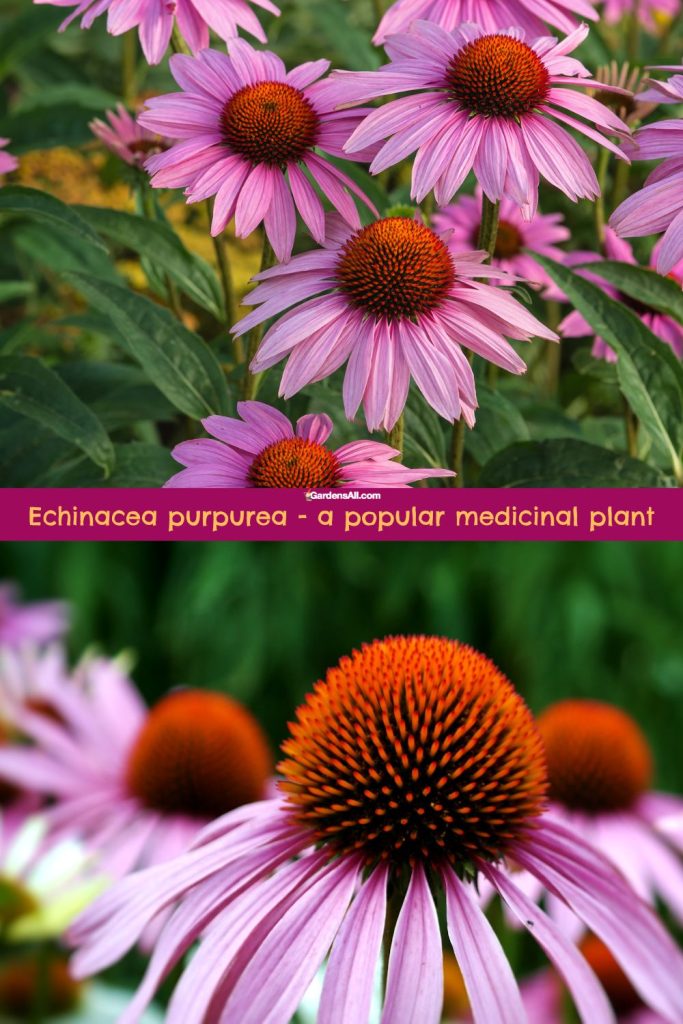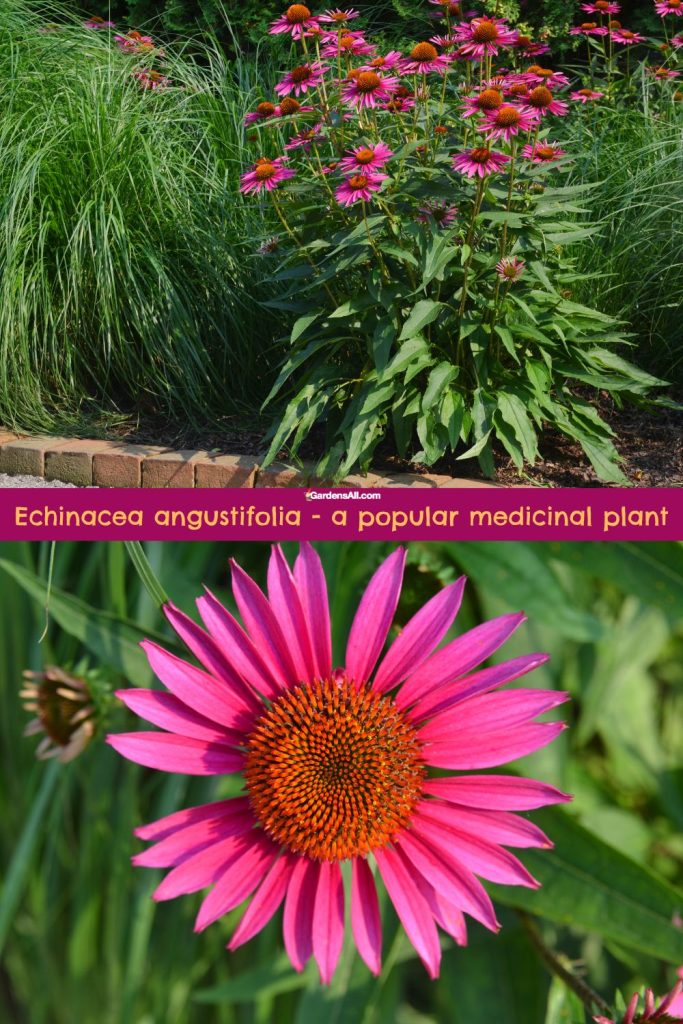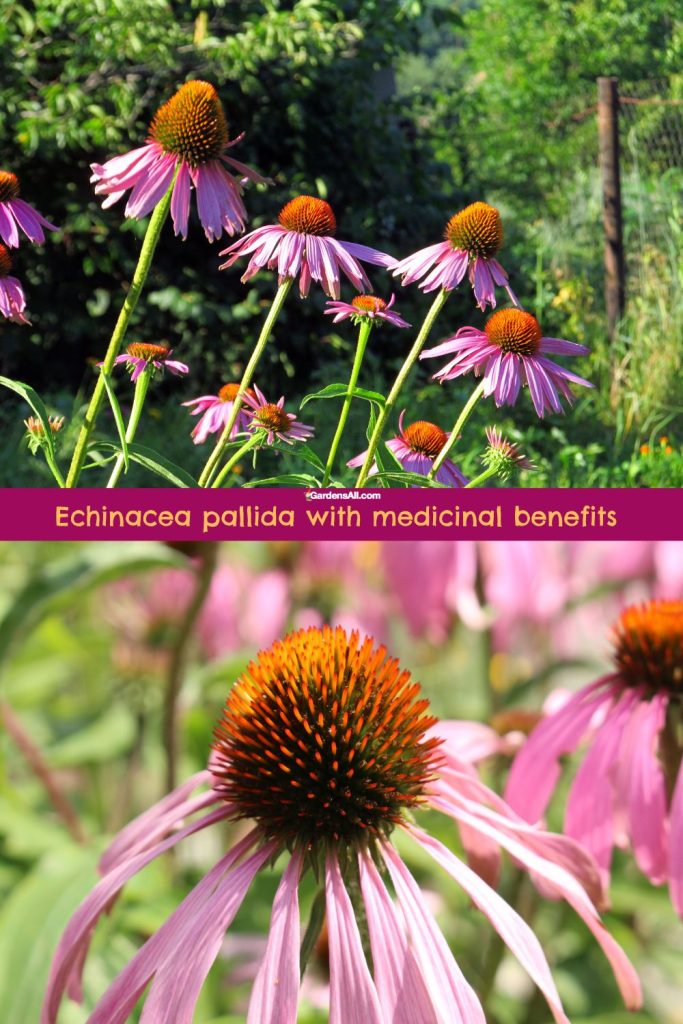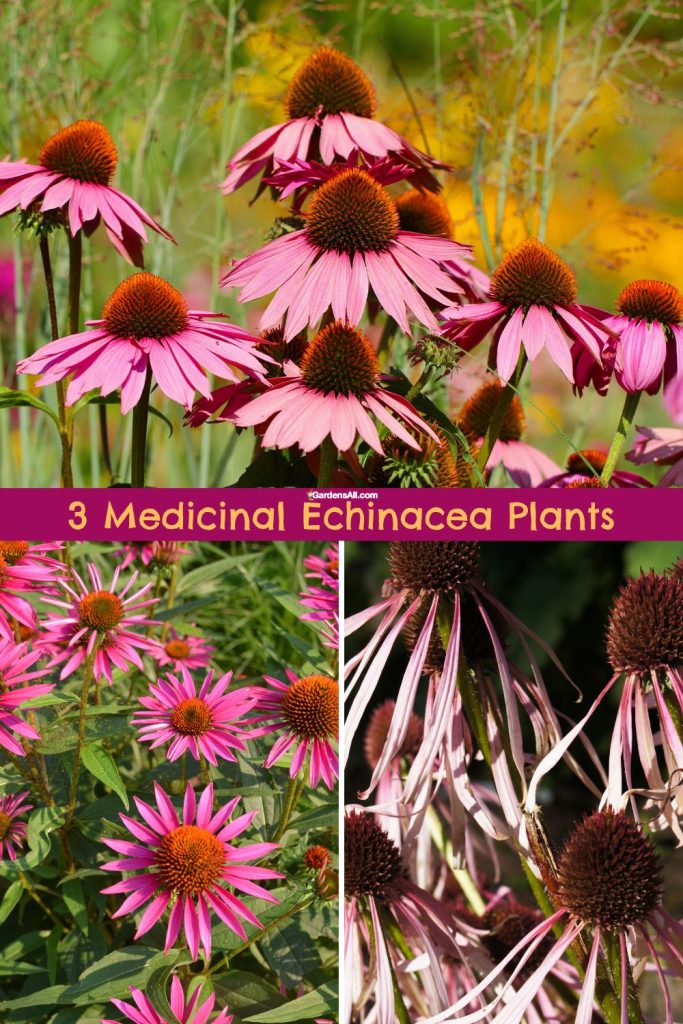If you’re wanting to grow medicinal echinacea plants, then you’ll want to know which echinacea plants are most commonly used for natural remedies.
Top 3 Medicinal Echinacea Plants
Echinacea purpurea
Echinacea purpurea is often preferred in scientific research due to its relative abundance and easy cultivation.
E. purpurea is most well-known for its immune-modulating effects and is commonly used to help with respiratory infections.
The aerial parts (flower and leaves) are often used for their high concentration of polysaccharides, which may help stimulate the immune system.
E. purpurea Common Names
- Eastern purple coneflower
- echinacea
- hedgehog coneflower
- purple coneflower

Echinacea angustifolia
Some herbalists claim that E. angustifolia is more potent than E. purpurea, however this claim is not universally accepted. Interestingly, the root of E. angustifolia’s is often the preferred part of this echinacea plant for medicinal use.
The roots have a high concentration of echinacosides, a type of phenol, which may have more potent antimicrobial and antiviral effects compared to other species.
E. angustifolia Common Names
- black Sampson
- Kansas snakeroot
- narrow-leaf echinacea
- narrow-leaved purple coneflower

Echinacea pallida
While this plant shares many properties with the other two echinacea species, E. pallida has been less studied, and as such, less is known about its comparative efficacy.
Traditional use suggests it has similar immune-supporting properties, and it also contains echinacosides, but typically at lower concentrations than E. angustifolia.
E. pallida Common Names
- grass skirt coneflower
- hula dancer coneflower
- pale purple coneflower
- pale coneflower

In Summary
While the three Echinacea species share many properties, slight differences exist in their composition and the traditional uses of different plant parts. However, more rigorous scientific research is needed to conclusively determine the differences in potency and efficacy between these species.
Please visit our article on some of the many health benefits of echinacea for more comprehensive information.
Though all Echinacea have some medicinal qualities, the roots, leaves, and flowers of 3 of the nine Echinacea species are important in the modern herbal medicine market:
~Kelly Kindscher, Senior Scientist and Professor of Biology at the University of Kansas
E. purpurea, E. pallida, and E. angustifolia.

I’m LeAura Alderson, a garden, herb and plant enthusiast with a passion for discovering the many edible and medicinal benefits of the plants all around us, including the weeds! I’m a writer, editor and media publisher for our family of websites.
While I was certified in fitness and life coaching, I am NOT a health practitioner. However, I’m a lifelong health enthusiast, with a keen interest in healthy, organic foods and making home remedies and the content we share is from our own experience and usage as well as that extracted from scientific research so that you can explore further on your own.
Always seek the advice and guidance of your health practitioners first and foremost.
As a family we’re steadily expanding our gardening, experimentation and knowledge around all things gardening, edible landscaping, fresh organic foods and self sustainability with farming in our future. I also own and manage iCreateDaily.com, a site all about transformation through creation, and the power of positivity, optimism and mindset.

